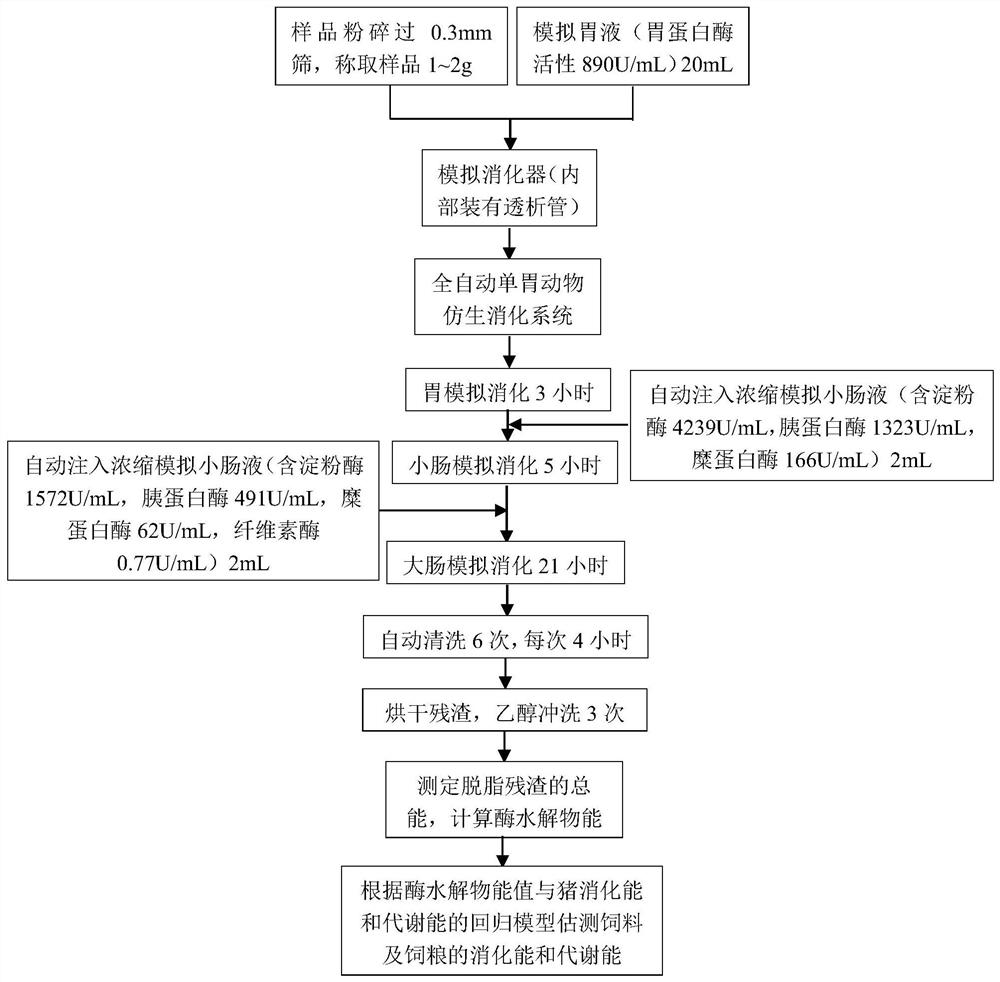Stomach-small intestine-large intestine bionic digestion method for growing pigs and application of method to estimation of effective energy value of feed
A technology for digesting and growing pigs in the gastrointestinal tract, applied in the field of animal husbandry, can solve problems such as low correlation, low activity of digestive enzymes, and large deviation of measured values, and achieve rapid repeatability, overcome low correlation, and overcome large deviations of measured values Effect
- Summary
- Abstract
- Description
- Claims
- Application Information
AI Technical Summary
Problems solved by technology
Method used
Image
Examples
Embodiment 1
[0124] Example 1. Estimating the exergy value of feed through the bionic digestion method of growing pigs
[0125] 1 Materials and methods
[0126] 1.1 Feed ingredients and experimental diet
[0127] 9 miscellaneous meal feed materials were selected, including 1 rapeseed meal, 4 cottonseed meal, 2 sunflower meal and 2 peanut meal. Its chemical composition is shown in Table 1:
[0128] Table 1 Sample source and chemical composition content (air-dried basis, %)
[0129]
[0130] In order to make the CP (crude protein) content of the test diet no more than 21%, and the proportion of the sample to be tested in the test diet is close to 20%, according to NRC (2012) the needs of growing pigs Ca, P, vitamins and trace elements Quantitatively prepare corn-soybean meal-type basal diet and experimental diet, the composition of which is as follows:
[0131] Table 2 Composition and chemical composition of the experimental diet (air-dried basis, %)
[0132]
[0133]
[0134] ...
PUM
 Login to View More
Login to View More Abstract
Description
Claims
Application Information
 Login to View More
Login to View More - R&D
- Intellectual Property
- Life Sciences
- Materials
- Tech Scout
- Unparalleled Data Quality
- Higher Quality Content
- 60% Fewer Hallucinations
Browse by: Latest US Patents, China's latest patents, Technical Efficacy Thesaurus, Application Domain, Technology Topic, Popular Technical Reports.
© 2025 PatSnap. All rights reserved.Legal|Privacy policy|Modern Slavery Act Transparency Statement|Sitemap|About US| Contact US: help@patsnap.com



